Table of Contents
Overview – Epithelial Tissues
Epithelial tissues are one of the four fundamental tissue types in the human body, alongside muscle, connective, and nervous tissues. They line surfaces, form glands, and regulate the exchange of materials between the body and the external environment. Nearly every substance that enters or exits the body must pass through an epithelial barrier, making them critical in functions like protection, secretion, filtration, and absorption. This article explores their structure, classification, and functional types in both membranes and glands.

Definition
Epithelial tissue consists of closely packed cells forming continuous sheets that line cavities and surfaces throughout the body. They may also develop into glandular structures involved in secretion.
General Functions
- Protection (e.g. skin)
- Absorption (e.g. intestines)
- Filtration (e.g. kidneys)
- Excretion (e.g. sweat glands)
- Secretion (e.g. endocrine glands)
- Sensory reception (e.g. skin, olfactory epithelium)
Key Characteristics
- Polarity → Apical surface (faces lumen) vs. Basal surface (attached to connective tissue)
- Apical: May bear microvilli or cilia
- Basal: Anchored by the basement membrane, consisting of:
- Basal lamina → selective filter
- Reticular lamina → collagen-rich connective support
- Specialised Cell Junctions
- Tight junctions → preserve polarity, prevent leakage
- Desmosomes → mechanical integrity
- Gap junctions → intercellular communication
- Avascular but Innervated → Receive nutrients via diffusion
- Supported by Connective Tissue → Reinforces structure and integrity
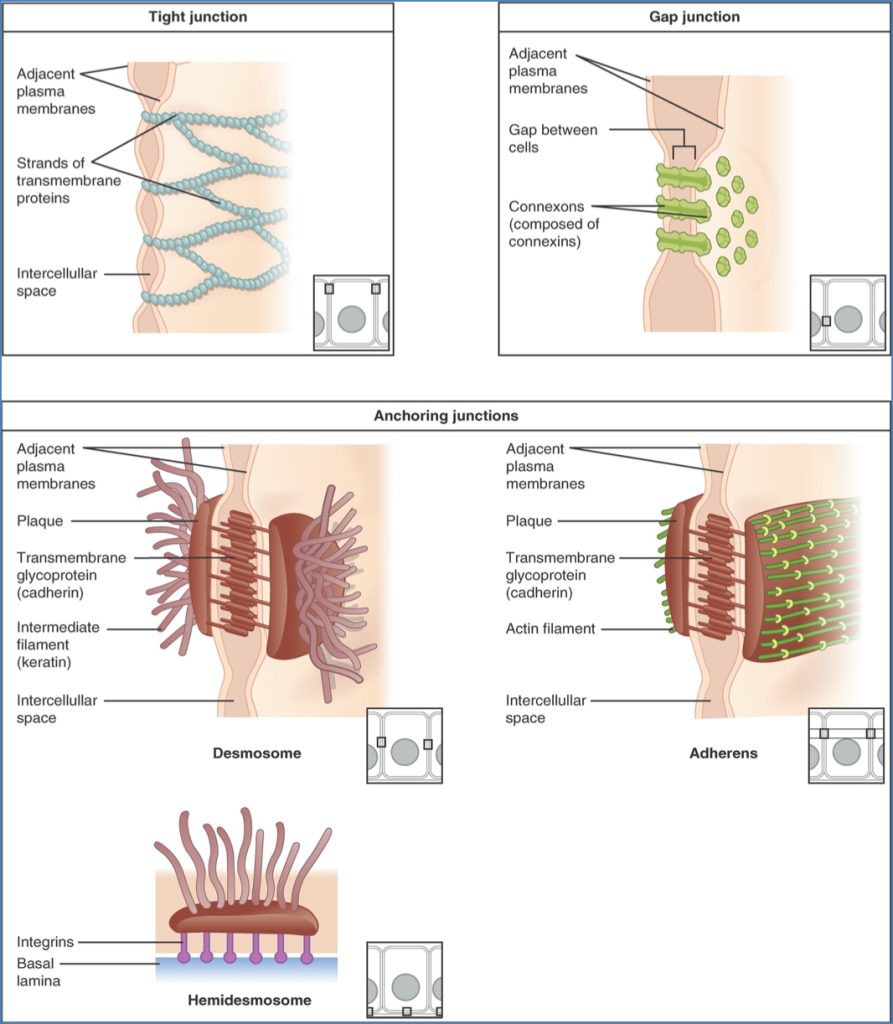
Epithelial Membranes
Cutaneous Membrane
- Keratinised stratified squamous epithelium + dense irregular connective tissue
- Dry membrane (e.g. skin)
Mucous Membrane
- Stratified squamous or simple columnar epithelium + lamina propria (loose CT)
- Lines body cavities opening to exterior (e.g. digestive, respiratory tracts)
- Wet, mucus-producing, adapted for absorption/secretion
Serous Membrane
- Simple squamous epithelium (mesothelium) + areolar tissue
- Moist membrane lining internal body cavities
- Has visceral and parietal layers
- Secretes serous fluid for friction-free movement
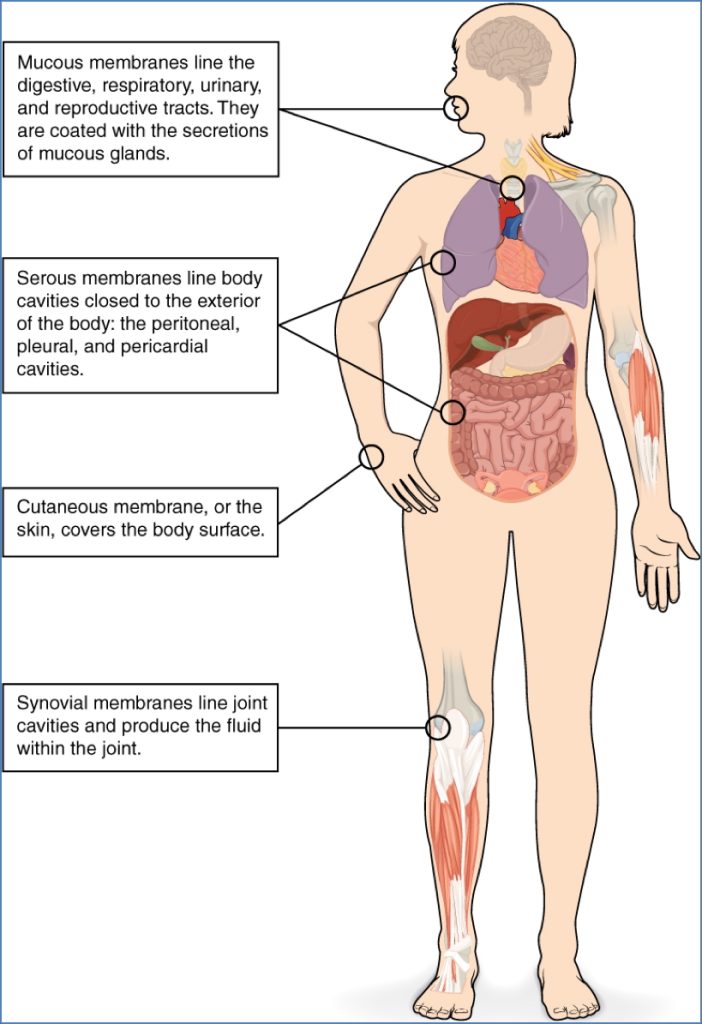
Histological Classification
Based on Cell Shape
- Squamous → Flat, thin, fried-egg appearance
- Cuboidal → Cube-shaped with central nucleus
- Columnar → Tall, column-like with basal nuclei
Based on Cell Layers
- Simple → Single layer (absorption, filtration)
- Stratified → Multiple layers (protection in abrasion-prone areas)
- Pseudostratified → Appears layered but all cells touch basal lamina
Examples by Type
- Simple Squamous → Alveoli, endothelium, serosa
- Simple Cuboidal → Kidney tubules, ovary surface
- Simple Columnar
- Ciliated → Uterine tubes, bronchi
- Non-ciliated → GI tract, gallbladder
- Pseudostratified Columnar
- Ciliated → Trachea
- Non-ciliated → Vas deferens
- Stratified Squamous → Skin, mouth, oesophagus, vagina
- Transitional Epithelium → Urinary bladder, ureters
- Dome-shaped apical cells
- Stretches for urine storage


Glandular Epithelium
Classification by Secretion Site
- Endocrine → Ductless, release hormones into bloodstream
- Exocrine → Secrete onto body surfaces or into cavities
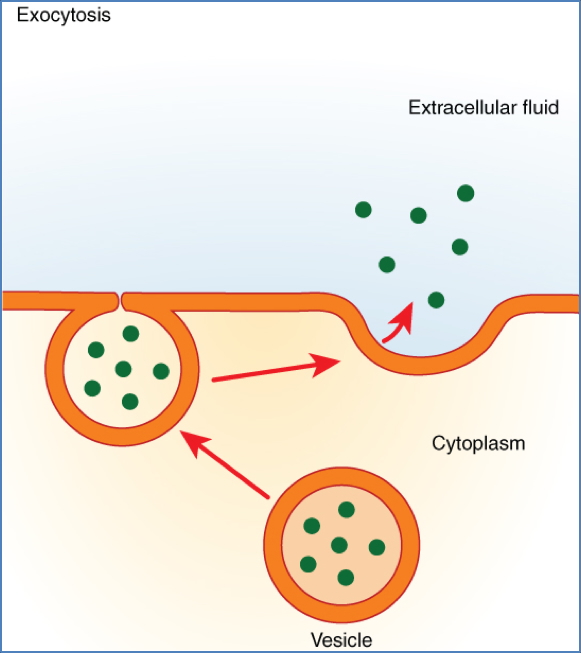
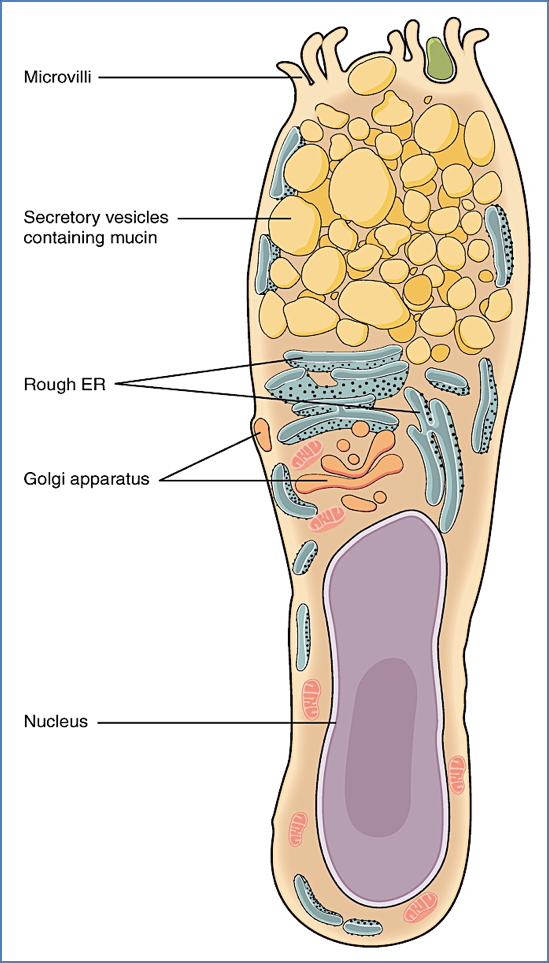
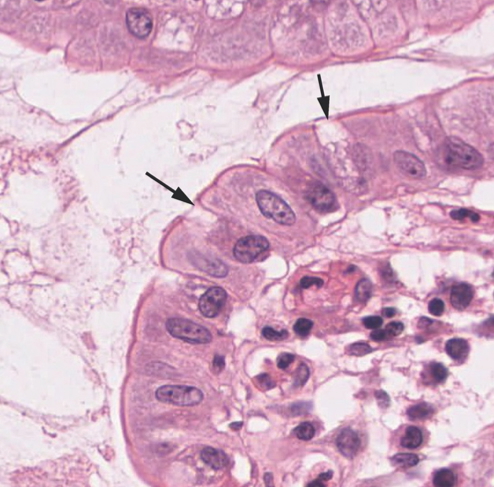
2 & 3. Exocrine: CNX OpenStax, CC BY 4.0 <https://creativecommons.org/licenses/by/4.0>, via Wikimedia Commons
Classification by Cell Number
- Unicellular → Goblet cells secreting mucin in respiratory & intestinal tracts
- Multicellular → Duct + secretory acinus (e.g. salivary glands)
Duct Structure
- Simple → Unbranched duct
- Compound → Branched duct
Secretory Unit Shape
- Tubular, Alveolar, or Tubuloalveolar
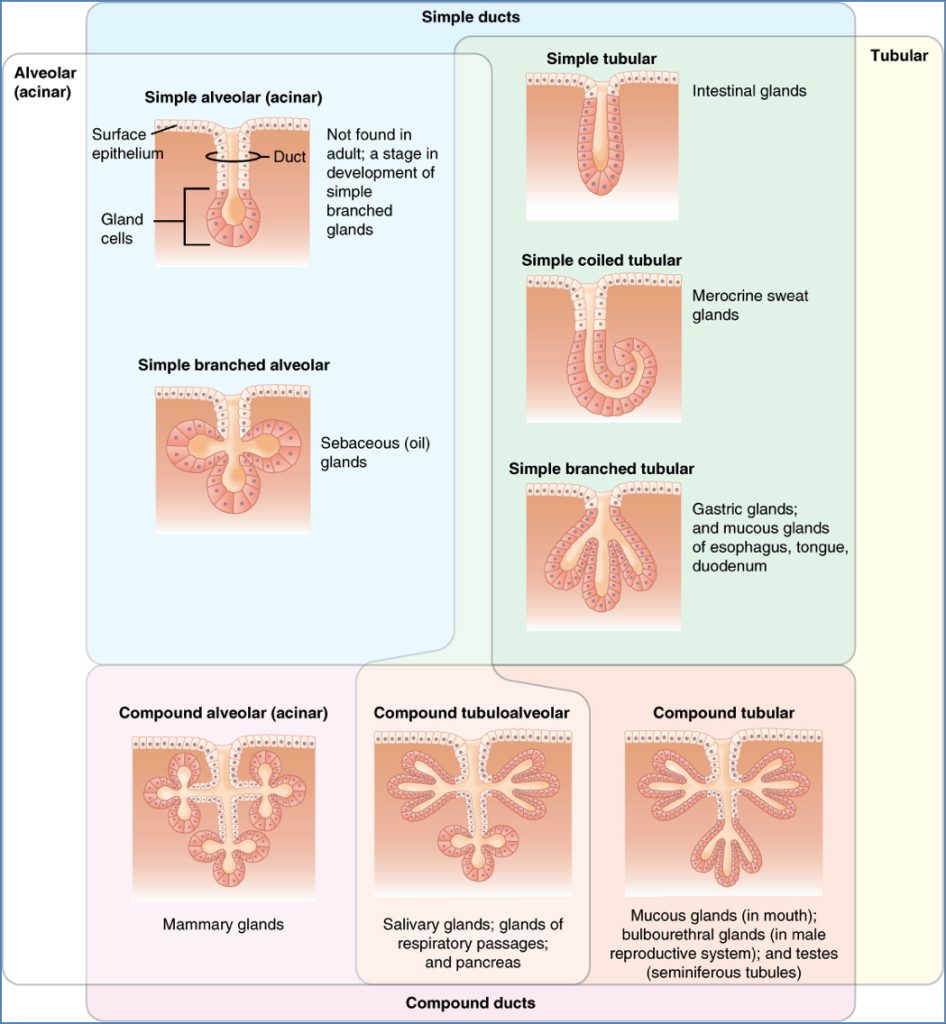
Mode of Secretion
- Merocrine → Via exocytosis (e.g. sweat, salivary glands)
- Holocrine → Cells rupture (e.g. sebaceous/oil glands)
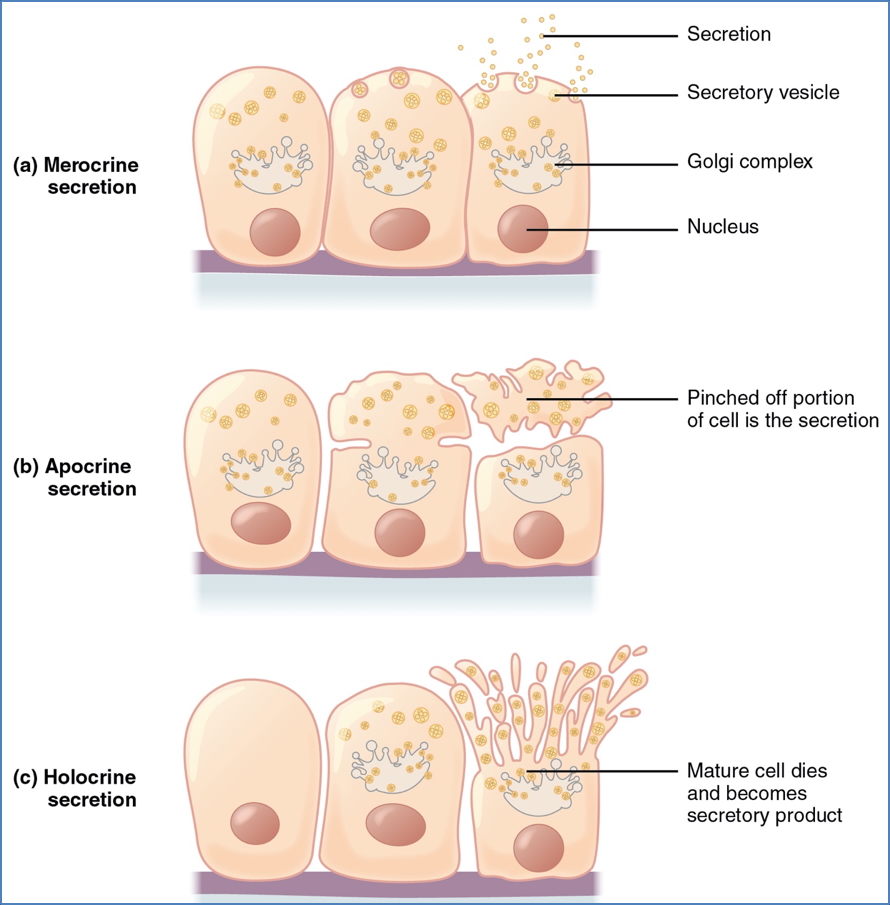

CNX OpenStax, CC BY 4.0 <https://creativecommons.org/licenses/by/4.0>, via Wikimedia Commons
Summary – Epithelial Tissues
Epithelial tissues form essential barriers and glands throughout the body, serving critical roles in protection, absorption, secretion, and sensory reception. They are classified based on cell shape, layering, and function, and are foundational to both membrane linings and glandular structures. Understanding epithelial structure is key to grasping numerous physiological and pathological processes. For more foundational content, visit our Cell Biology & Biochemistry Overview page.